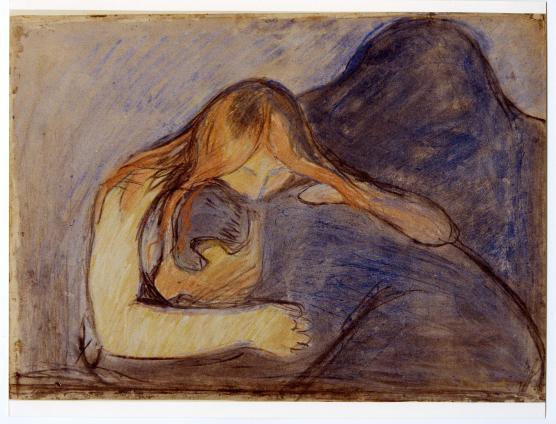
The Frieze of Life is a term Munch coined later, to describe a series of paintings from the 1890s, which dealt with the themes love, illness and death. Well-known works such as The Scream, Madonna, Vampire, Angst, Melancholy, Death in the Sickroom, and a number of others belong to this group. All these paintings have their parallels in prints and drawings, and through the drawings we also experience a close contact with the creative process itself. Have a look at the first, detailed depiction of the motif Kiss (MM.T.02356) or see how he experiments with the composition of The Scream in the sketchbook MM.T.00129-38. The fully developed motif of Woman consists only of the woman in white, the naked woman and the woman in black, but in MM.T.02762 there is a man next to them, and the woman in black is holding a decapitated male head.
Several Frieze of Life motifs also live a prolonged life through later repetitions and reworkings. Around 1910 Munch is testing out a composition of the above mentioned Woman with a seated naked male among the three women. And much later this constellation resurfaces with characters from Ibsen’s play When We Dead Awaken. Here Irene is depicted as the woman in white, the nun as the woman in black, and Maja as the erotic one, sitting on Rubek’s lap. Not totally surprising, since Munch was convinced that Ibsen had been inspired by the three female figures in Woman when writing this play.
For a long time, Munch was occupied with finding a permanent exhibition space for The Frieze of Life, and in MM.T.02411 we may possibly see an exciting and radical idea for the presentation of these works, with trees as a connecting decorative element.
(MB)
